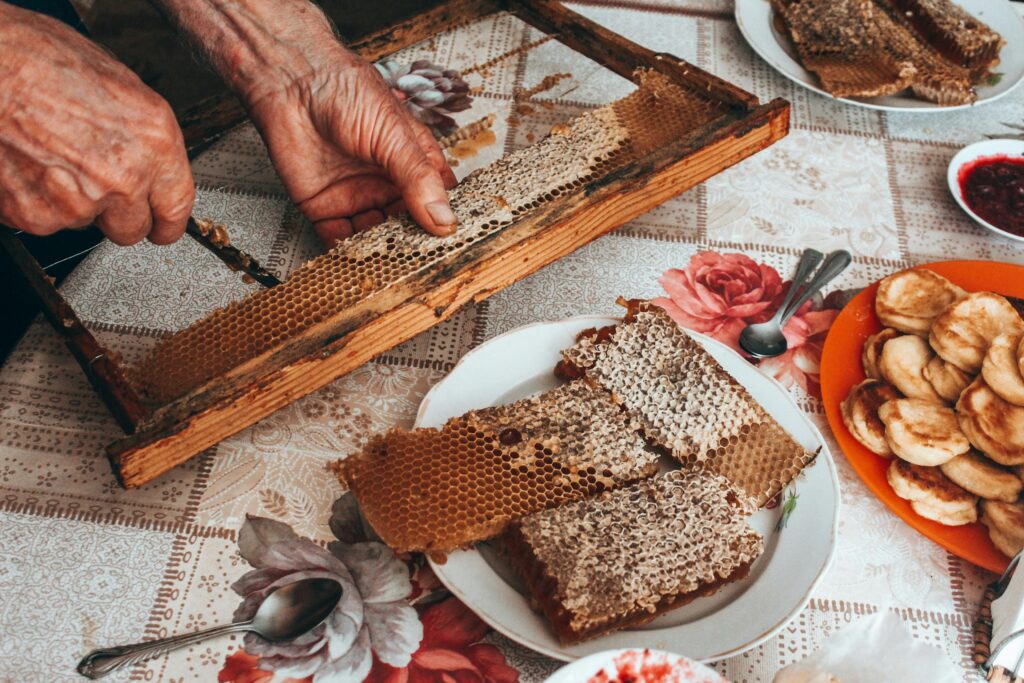Have you ever thought about how your Android phone represents who you are? Our smartphones are, after all, our constant companions. They wake us up, keep us connected, remind us of important tasks, and even entertain us during those moments of boredom. What’s fascinating is that beyond these functional aspects, our phones embody a part of our personal identity. How? Through customization and those nifty little tools called widgets.
Why Personalization Matters
Our phones are as much an extension of us as the clothes we wear or the way we decorate our homes. Customization gives us the power to make our phones truly ours. This isn’t just about aesthetic choices; it’s about reflecting our priorities, habits, and even our favorite colors. By customizing my phone, I can make it feel more personal and familiar. Let’s break down some aspects of why this matters.
Expressing Individuality
Everyone is unique, and we all like to express that uniqueness in different ways. For some, it’s about showcasing vibrant colors and dynamic wallpapers. For others, it’s about minimalism and functionality. When I customize my Android device, it becomes a canvas for my individuality. Whether it’s through a dark mode that aligns with my late-night habits or vibrant, animated wallpapers that showcase my dynamic personality, customization has allowed me to inject a part of myself into my device.
Enhancing Productivity
Customization isn’t just about showing off. It’s also about making my life easier. Widgets can help me do this by providing quick access to the apps and information I use most. A calendar widget on my home screen quickly reminds me of upcoming appointments, while a to-do list widget keeps me on track with my daily tasks. By reorganizing my home screen and app drawer, I spend less time searching and more time being productive.
The Essentials of Android Customization
Android provides a treasure chest of customization options that can be as simple or as complex as you like. Below, I’ll break down some essential elements that will help you get started on your customization journey.
Home Screen Layout
The home screen is essentially the face of your Android device. How you arrange your apps, widgets, and shortcuts here can significantly impact your experience. For me, having a clutter-free, well-organized home screen enhances both aesthetics and functionality.
Wallpapers and Themes
Wallpapers and themes are perhaps the most basic form of customization. A fantastic wallpaper can set the tone for your phone, whether you want something serene and calming or something full of energy. Themes, on the other hand, go beyond just the wallpaper. They change icons, fonts, and even the overall color scheme. My personal favorite is a theme that aligns with the seasons—warmer tones for summer and cooler hues for winter.
Icon Packs
Tired of the same old app icons? Icon packs can entirely transform the look of your device. By downloading an icon pack, you can change the appearance of your app icons to match your theme or mood. This adds another layer of personalization and can make the interface more visually appealing.

Making It Functional: Widgets
Widgets are small, interactive tools that provide quick access to information or functionality. They are the bridge between aesthetics and utility. Unlike regular app icons, widgets can show real-time data like weather updates, calendar events, or news headlines, all without opening the app.
Types of Widgets
Widgets come in all shapes and sizes, and they serve multiple purposes. Let me share a few examples of the types of widgets you might find useful:
| Widget Type | Purpose |
|---|---|
| Weather Widgets | Real-time weather updates |
| Calendar Widgets | Upcoming events and reminders |
| Music Widgets | Quick controls for your music player |
| News Widgets | Latest headlines and breaking news |
| Health Widgets | Step count, heart rate, etc. |
There are, of course, many other specialized widgets, from note-taking tools to budget trackers. The key is to find widgets that align with your needs and integrate them seamlessly into your home screen layout.
Customizing Widgets
One of the great aspects of Android is the ability to customize your widgets. Many widgets offer several design options that you can tweak to better fit your home screen’s look and feel. For example, you might be able to change the size, color, and transparency. I often adjust the size of my widgets to strike a balance between functionality and aesthetics.
Advanced Customization Techniques
Once you’re comfortable with the basics, why not take it up a notch? Here are a few advanced techniques that have helped me make my Android device even more unique.
Using Launcher Apps
Launcher apps like Nova Launcher or Microsoft Launcher can completely change the look and feel of your device. They offer endless customization options, from app drawer layouts to gesture controls. The first time I used a launcher app, I was amazed at how drastically it transformed my Android experience.
Task Automation
Apps like Tasker allow you to automate various tasks on your device. Think about automatically turning on Wi-Fi when you get home or muting your phone during a meeting. While it takes some initial setup, automation can make your phone smarter and your life easier.
Custom ROMs
For the truly adventurous, custom ROMs like LineageOS offer an entirely different Android experience. Installing a custom ROM gives you more control over your device but also requires a bit of technical know-how. I once ventured into the world of custom ROMs and found it an enlightening experience, though it’s not for everyone.

The Emotional Aspect of Customization
As much as customization enhances functionality and aesthetics, there’s an emotional aspect to it as well. My phone isn’t just a tool; it’s a repository of memories, a gateway to my social life, and sometimes, my escape. Customizing my phone helps me feel more connected to it.
Sentimental Value
From setting a wallpaper of a memorable vacation to using widgets that display photos of loved ones, customization allows me to carry my happiest moments with me. It adds a layer of sentimental value that elevates the experience of using my phone.
Comfort and Familiarity
There’s something incredibly comforting about a familiar layout. When everything is organized just the way I like it, using my phone becomes second nature. This comfort has an undeniable emotional benefit, making daily interactions with my phone more pleasant.
Balancing Aesthetics and Utility
The challenge often lies in finding the right balance between aesthetics and functionality. Too many widgets can create a cluttered look, while focusing solely on aesthetics can compromise utility. Here’s how I navigate this delicate balance.
Prioritizing Widgets
I tend to prioritize widgets that provide real-time information I frequently need. For example, my home screen always features a weather widget and a calendar widget. Other widgets, like those for music or news, are placed on secondary screens.
Using Folders
Organizing apps into folders can help declutter your home screen without sacrificing access to essential apps. I have folders for different categories, such as Social, Work, and Entertainment. This setup allows me to keep my home screen tidy while ensuring that my most-used apps are just a tap away.

Troubleshooting Common Issues
Customizing your Android device is generally straightforward, but like anything, it’s not without its challenges. Here are some common issues I’ve encountered and how to address them.
Widgets Not Updating
Sometimes widgets don’t update as they should, which can be frustrating. If this happens, check for updates for both the widget and the app it’s tied to. Restarting your phone or reinstalling the app can also solve this issue.
Battery Drain
Widgets and customizations can sometimes lead to increased battery consumption. To mitigate this, I monitor my battery usage closely and disable or remove any widgets that are particularly power-hungry.
Performance Lag
If your device starts lagging due to too many widgets or customizations, consider scaling down. Removing unnecessary widgets and simplifying your home screen layout can help improve performance.
Customization and Accessibility
While customization is often about personalization and aesthetics, it’s essential to consider accessibility. Various customization options can make Android devices more accessible to people with different needs.
Larger Icons and Text
For those with visual impairments, increasing the size of icons and text can make the device easier to use. I find that tweaking these settings ensures better readability without compromising too much on design.
Voice Commands
Voice commands are another excellent way to make your Android device more accessible. Google Assistant, for example, can help you navigate your phone, send messages, or set reminders, all using voice commands.
High-Contrast Themes
High-contrast themes are beneficial for individuals with visual impairments or color blindness. These themes ensure that text and icons are easily distinguishable, improving the overall user experience.
Future Trends in Customization
The world of Android customization is continually evolving. As technology advances, new possibilities for personalization emerge. Let’s take a look at some trends that are shaping the future.
AI and Customization
Artificial Intelligence is making its way into customization, offering smarter and more intuitive options. For example, AI can analyze your usage patterns to suggest layouts, widgets, and themes tailored to your habits. I’m excited to see how AI will further personalize the user experience in the future.
Augmented Reality
Augmented reality (AR) is another trend that holds promise. Imagine a home screen that can display AR elements like 3D widgets or interactive wallpapers. It’s an exciting frontier that blends digital and physical realms in innovative ways.
Integration with Wearables
As wearables become more sophisticated, expect tighter integration with your Android device. Customization options could extend to smartwatches, headphones, and even smart glasses, creating a cohesive and personalized ecosystem.
Conclusion
Customizing my Android device has been more than just a technical exercise; it’s been a journey of self-expression and efficiency. The ability to tailor my phone to my exact liking has not only made it more functional but also more meaningful. Whether you’re a customization veteran or a newbie, taking the time to personalize your device can enrich your digital life, making your smartphone truly an extension of yourself. So go ahead, dive into your settings, experiment with widgets, and make your phone as unique as you are.
